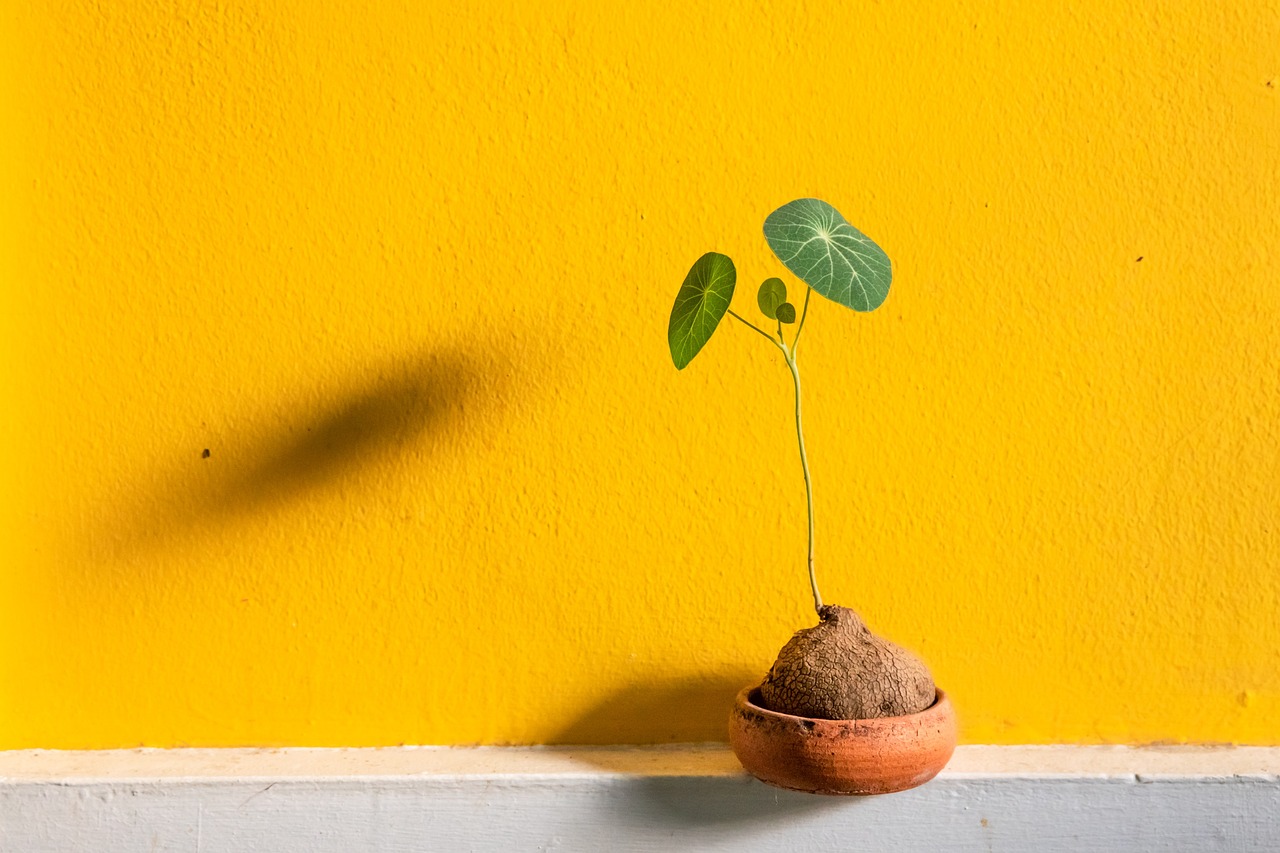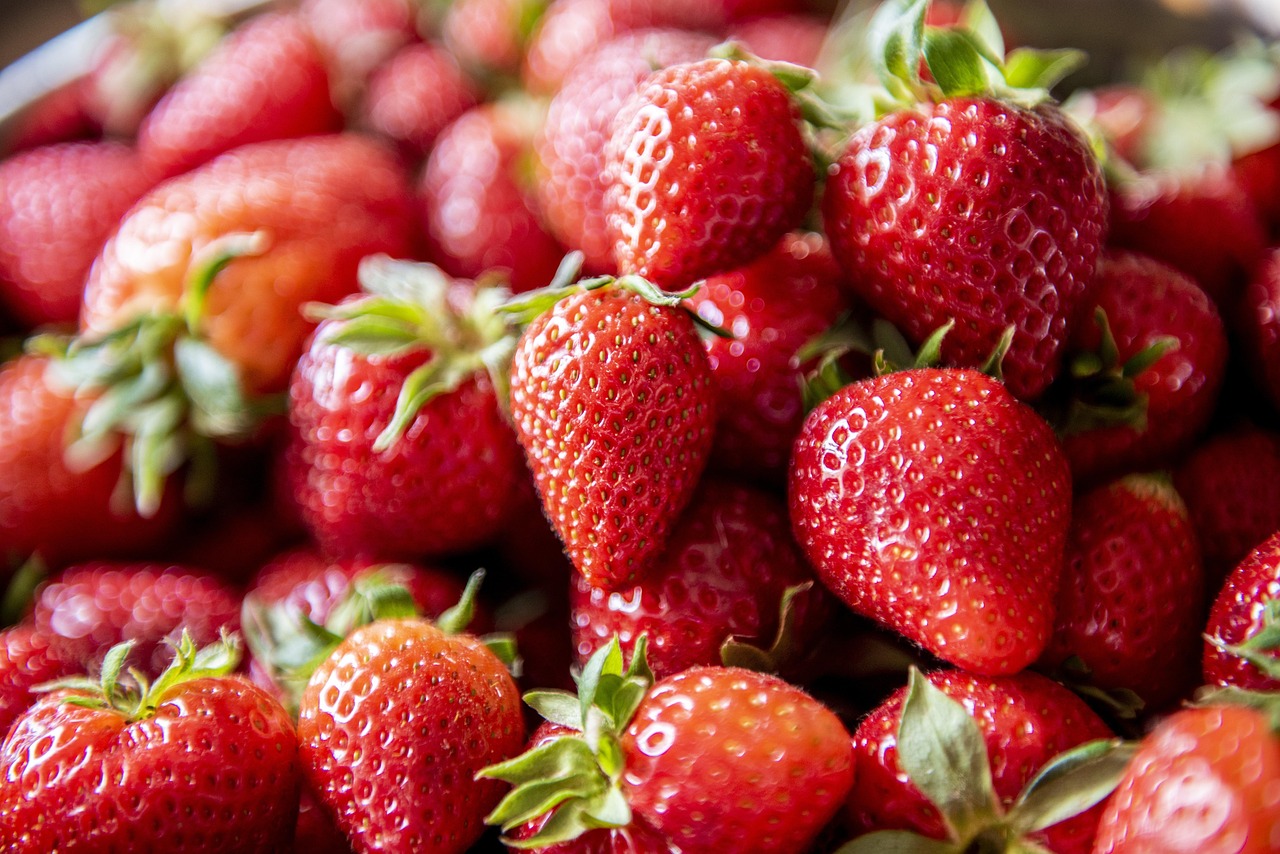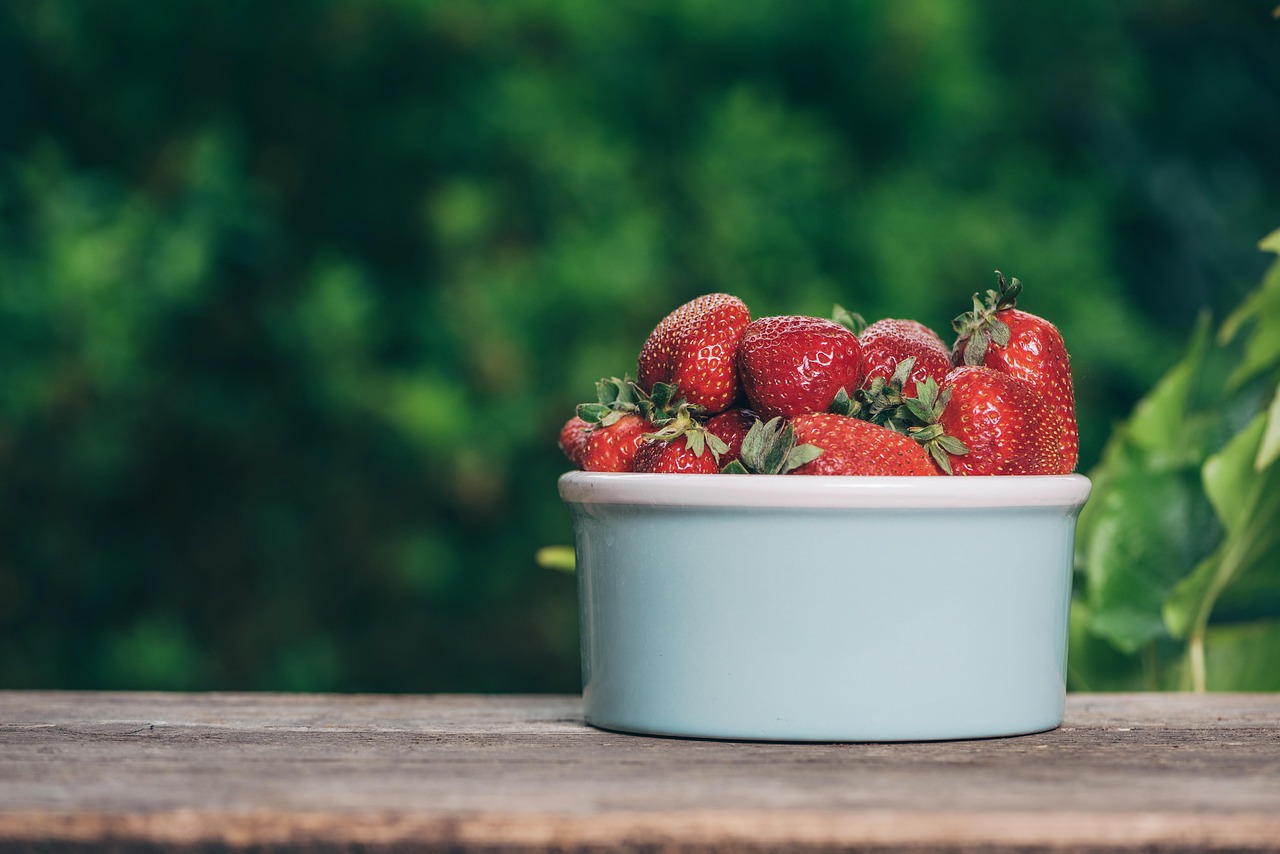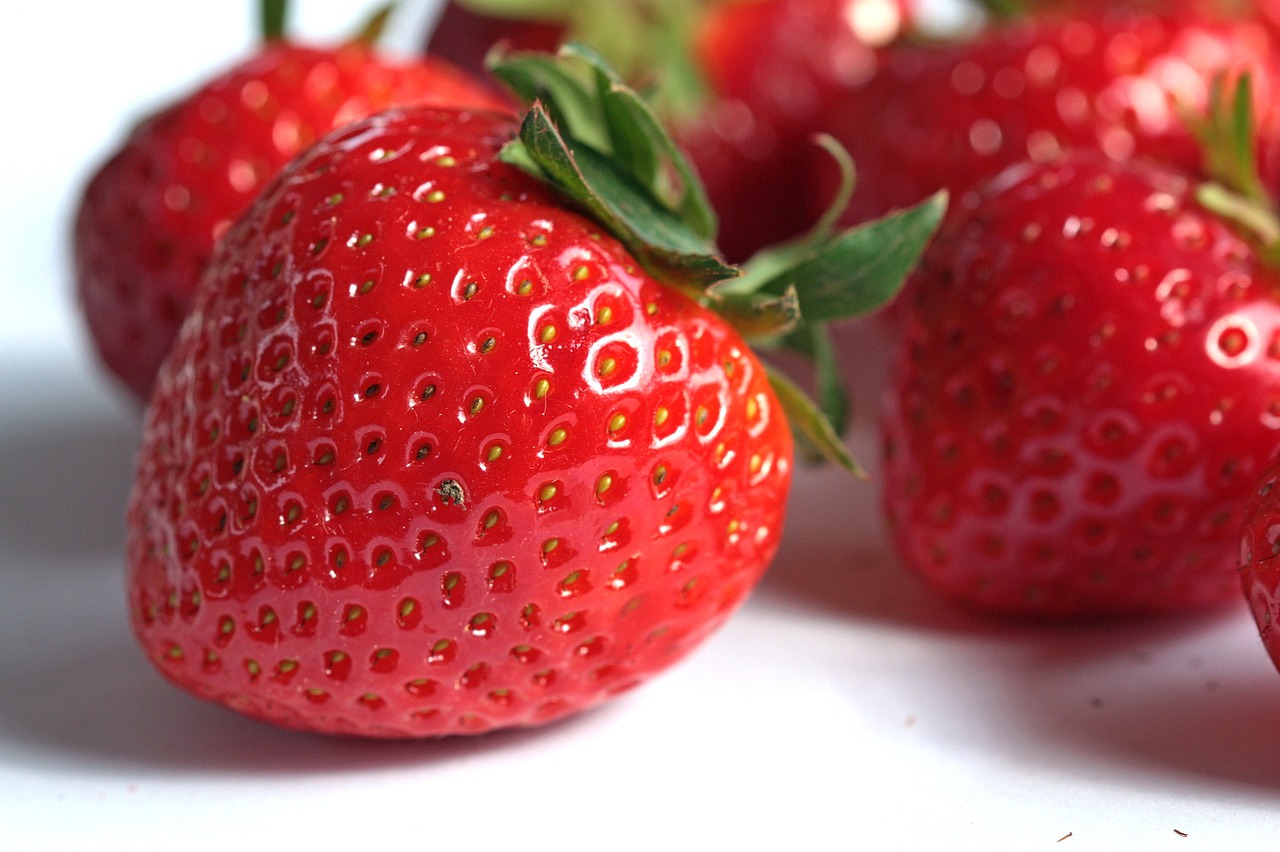Growing strawberries in pots is a rewarding endeavor. To ensure healthy plants and a bountiful harvest, choose the right container, use quality potting soil, provide ample sunlight, and maintain consistent watering and fertilization schedules.
Understanding Container Strawberry Cultivation

Strawberries are popular fruits known for their sweet flavor and versatility in various dishes. Growing them in pots is an excellent option for gardeners with limited space or those who want to enjoy fresh strawberries on their patios or balconies. Container gardening allows you to control the growing conditions, which can lead to healthier plants and better fruit production.
When growing strawberries in containers, there are several important factors to consider. Firstly, the choice of container plays a crucial role in the growth of strawberry plants. A suitable pot should have adequate drainage, as strawberries do not thrive in waterlogged soil. Additionally, the size of the pot can influence the number of plants you can grow and their overall health.
Choosing the Right Container
Selecting the right container is essential for successful strawberry growth. Here are some key points to consider:
- Size: A pot that is at least 12 inches deep and wide is ideal for growing one or two strawberry plants.
- Material: Terra cotta, plastic, and wooden containers are popular choices. Ensure they have drainage holes.
- Mobility: Consider using pots with wheels or lightweight materials for easier movement.
Soil Selection
The type of soil you use can significantly affect the health of your strawberry plants. Quality potting soil is recommended for container gardening. This type of soil provides essential nutrients and maintains moisture levels without becoming compacted.
Strawberries thrive in slightly acidic to neutral pH levels, ideally between 5.5 and 7.0. You can test your soil’s pH using a simple kit available at gardening stores. For optimal growth, consider mixing in organic compost or well-rotted manure to enhance fertility.
Sunlight Needs
Strawberries require plenty of sunlight to produce sweet and juicy fruit. Ideally, they should receive at least six to eight hours of direct sunlight each day. When positioning your potted strawberries, choose a sunny spot that is sheltered from strong winds, which can damage the plants.
If you live in a particularly hot climate, some afternoon shade may help prevent the plants from becoming stressed due to excessive heat. However, ensure they still get ample morning sunshine to promote healthy growth.
Watering and Fertilization
Proper watering is vital for container-grown strawberries. The soil should be kept consistently moist but not soggy. Overwatering can lead to root rot, while underwatering can stress the plants and reduce fruit production. A general rule of thumb is to water when the top inch of soil feels dry to the touch.
Fertilization also plays a key role in strawberry care. Use a balanced fertilizer formulated for fruits, and follow the package instructions for application frequency. Typically, fertilizing every four to six weeks during the growing season will support healthy growth and fruiting.
| Care Aspect | Recommendation |
|---|---|
| Container Size | At least 12 inches deep and wide |
| Sunlight | 6-8 hours of direct sunlight daily |
| Watering | Keep soil consistently moist |
| Fertilization | Every 4-6 weeks with balanced fertilizer |
Choosing the Right Strawberry Varieties for Containers
Not all strawberry varieties are suitable for container gardening. Understanding which types perform best in pots can greatly enhance your gardening success. Generally, there are three main types of strawberries: June-bearing, everbearing, and day-neutral. Each has unique characteristics that can affect your choice.
Types of Strawberries
- June-bearing: These produce a large harvest in late spring or early summer. They typically yield more fruit but only once per season.
- Everbearing: Everbearing varieties produce fruit throughout the growing season, providing smaller harvests but more frequently.
- Day-neutral: This type produces fruit continuously, regardless of day length, offering a steady supply of strawberries.
For container gardening, day-neutral and everbearing varieties are often recommended due to their ability to produce fruit over an extended period. Popular choices include ‘Albion’, ‘Seascape’, and ‘Quinault’, known for their robust growth in smaller spaces.
Planting Techniques
Proper planting techniques are crucial for the healthy establishment of strawberries in pots. Here are some steps to follow when planting your strawberries:
- Prepare the Container: Ensure the pot has drainage holes and fill it with high-quality potting soil mixed with compost.
- Planting Depth: Position the plants so that the crown (the point where the roots meet the stem) is level with the soil surface. This helps prevent rot while allowing for proper growth.
- Spacing: Space plants about 12-18 inches apart to allow room for growth and air circulation.
Once planted, gently water the strawberries to help settle the soil around the roots. Avoid overwatering, as this can lead to root rot.
Pest and Disease Management
Like any other plants, container strawberries are susceptible to pests and diseases. Regular monitoring and preventive measures can help protect your plants. Here are common pests and diseases to watch for:
Common Pests
- Aphids: Small insects that may cause leaf curling and stunted growth. Use insecticidal soap or neem oil for control.
- Spider Mites: These tiny pests thrive in dry conditions and can cause leaf discoloration. Increase humidity around the plants and consider insecticidal options if needed.
- Slugs and Snails: These mollusks can eat leaves and fruits. Use barriers like copper tape or traps filled with beer to deter them.
Disease Management
Diseases can also affect strawberry plants. The following diseases are common among container-grown strawberries:
- Powdery Mildew: A fungal disease causing white powdery spots on leaves. Ensure good air circulation and avoid overhead watering.
- Botrytis (Gray Mold): This can occur in wet conditions, especially on ripe fruit. Remove affected parts and improve ventilation around the plants.
Preventive care is essential. Rotate your plants each year and clean up fallen leaves or debris that might harbor pests or diseases.

Watering Techniques for Healthy Growth
The right watering technique is vital for the health of your potted strawberries. Here are some best practices:
- Watering Frequency: Water your strawberries deeply but less frequently. Aim for about 1-2 inches of water per week, depending on the weather conditions.
- Morning Watering: Watering in the morning allows plants to absorb moisture before the heat of the day, reducing evaporation.
- Avoid Watering Leaves: Try to water at the base of the plant to keep foliage dry, which helps prevent fungal diseases.
By following these watering techniques along with proper care, you will set your container strawberries up for a successful growing season.
Fertilization Strategies for Container Strawberries

Fertilizing your container-grown strawberries is essential for promoting healthy growth and maximizing fruit production. Understanding the nutritional needs of strawberries helps ensure that your plants receive the right balance of nutrients throughout the growing season.
Types of Fertilizers
There are different types of fertilizers available, each with its benefits. Here are the most common options:
- Granular Fertilizers: These slow-release fertilizers provide nutrients over an extended period. They are easy to apply and ideal for container gardening.
- Liquid Fertilizers: These can be quickly absorbed by plants and are excellent for providing immediate nutrients, especially during the growing season.
- Organic Fertilizers: Options like compost, fish emulsion, or seaweed extract enrich the soil naturally and improve its structure.
When selecting a fertilizer, look for one that is balanced, such as a 10-10-10 NPK ratio, which indicates equal parts nitrogen (N), phosphorus (P), and potassium (K). This balance supports overall plant health and fruit development.
Application Frequency
The frequency of fertilization can vary based on the type of fertilizer you choose:
- Granular Fertilizer: Apply every 4-6 weeks during the growing season. Follow package instructions for the correct amount.
- Liquid Fertilizer: Use every 2-4 weeks, particularly during peak growth periods. Dilute according to the product’s instructions for safe application.
- Organic Options: Incorporate organic matter into the soil at planting and supplement as needed throughout the season.
Harvesting Strawberries
Harvesting strawberries at the right time is crucial for enjoying their full flavor and sweetness. Knowing when to pick your strawberries can enhance your enjoyment of this delicious fruit.
Indicators of Ripeness
Strawberries are ready to be picked when they meet several ripeness criteria:
- Color: Look for a vibrant red color. Avoid picking berries with white or green patches, as they are not fully ripe.
- Firmness: Ripe strawberries should be firm but slightly soft to the touch. Overripe berries may feel mushy.
- Aroma: A sweet fragrance indicates ripeness. If they smell fragrant, they are likely ready to harvest.
Harvesting Technique
When harvesting strawberries, use gentle techniques to avoid damaging the fruit or the plant:
- Use Scissors or Pruners: Cut the stem about an inch above the berry rather than pulling it. This prevents damage to the plant.
- Avoid Overripe Berries: Pick only ripe berries to encourage further fruit development on the plant. Leaving overripe fruit can attract pests.
- Harvest in the Morning: Picking berries in the cooler morning hours helps preserve their quality and flavor.
Once harvested, strawberries can be enjoyed fresh, used in recipes, or preserved. They are best when consumed shortly after picking, but they can also be refrigerated for a few days if necessary.
Seasonal Care and Maintenance

Caring for container strawberries involves seasonal adjustments to ensure optimal growth throughout the year. Here are some tips for managing your strawberry plants through different seasons:
Spring Care
During spring, your strawberry plants will start to grow vigorously. Key tasks include:
- Fertilizing: Begin fertilizing in early spring as new growth appears.
- Watering Consistently: Ensure that plants receive enough moisture as temperatures rise.
- Pest Monitoring: Keep an eye out for pests emerging with warmer weather.
Summer Care
In summer, strawberries will produce fruit. Focus on:
- Regular Harvesting: Pick ripe strawberries to encourage more fruit production.
- Mulching: Add mulch to retain moisture and suppress weeds around pots.
- Disease Prevention: Monitor for signs of disease and remove affected foliage promptly.
Fall and Winter Preparation
As temperatures drop in fall, prepare your plants for winter:
- Pest Control: Treat any lingering pest issues before winter.
- Mulch Application: Add a layer of mulch to protect roots from freezing temperatures.
- Move Pots if Necessary: If experiencing harsh winters, consider moving pots to a sheltered location or indoors.
This seasonal care will help ensure
Continuous Monitoring and Adaptation
Caring for container strawberries is an ongoing process that requires consistent attention. Regularly monitoring your plants helps you detect issues early, whether they are related to pests, diseases, or environmental stressors. Here are some tips for effective monitoring:
- Daily Checks: Inspect your plants daily during the growing season. Look for signs of wilting, yellowing leaves, or unusual spots.
- Record Keeping: Maintain a log of watering schedules, fertilization, and any pest control measures taken. This can help you identify patterns and improve care strategies over time.
- Adjust Care as Needed: Be prepared to adjust your watering and fertilization based on weather changes. For instance, hot, dry conditions may require more frequent watering.
Final Thoughts
Growing strawberries in pots can be a highly rewarding experience, allowing you to enjoy fresh fruit right from your balcony or patio. By selecting the right varieties, providing proper care, and maintaining a vigilant watch over your plants, you can cultivate healthy strawberry plants that yield delicious fruit throughout the season.
Key takeaways include understanding the importance of soil quality, ensuring adequate sunlight and water, and being proactive about pest and disease management. Each of these factors contributes to the overall health of your strawberry plants.
Remember that gardening is about learning and adapting. Each growing season presents new challenges and opportunities. Take notes on what works best for your specific environment and make adjustments based on your observations. With patience and care, your container-grown strawberries will provide abundant harvests year after year.
As you embark on your journey of growing strawberries in pots, embrace the joy of nurturing these vibrant plants. The satisfaction of picking fresh strawberries from your own garden is unmatched and well worth the effort!
